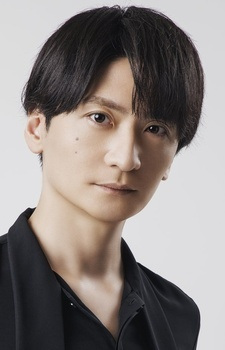
Kimi no Na wa.
Summary: Mitsuha Miyamizu, a high school girl, yearns to live the life of a boy in the bustling city of Tokyo—a dream that stands in stark contrast to her present life in the countryside. Meanwhile in the city, Taki Tachibana lives a busy life as a high school student while juggling his part-time job and hopes for a future in architecture.
One day, Mitsuha awakens in a room that is not her own and suddenly finds herself living the dream life in Tokyo—but in Taki's body! Elsewhere, Taki finds himself living Mitsuha's life in the humble countryside. In pursuit of an answer to this strange phenomenon, they begin to search for one another.
Kimi no Na wa. revolves around Mitsuha and Taki's actions, which begin to have a dramatic impact on each other's lives, weaving them into a fabric held together by fate and circumstance.
[Written by MAL Rewrite]
Description
Mitsuha Miyamizu, a high school girl, yearns to live the life of a boy in the bustling city of Tokyo—a dream that stands in stark contrast to her present life in the countryside. Meanwhile in the city, Taki Tachibana lives a busy life as a high school student while juggling his part-time job and hopes for a future in architecture.
One day, Mitsuha awakens in a room that is not her own and suddenly finds herself living the dream life in Tokyo—but in Taki's body! Elsewhere, Taki finds himself living Mitsuha's life in the humble countryside. In pursuit of an answer to this strange phenomenon, they begin to search for one another.
Kimi no Na wa. revolves around Mitsuha and Taki's actions, which begin to have a dramatic impact on each other's lives, weaving them into a fabric held together by fate and circumstance.
[Written by MAL Rewrite]
Available At
Warning: Array to string conversion in /home/hianime.me.uk/public_html/anime.php on line 243
Array
Kimi no Na wa. Trailers
Kimi no Na wa. Pictures
Kimi no Na wa. Review
Kimi no Na wa. — Mitsuha Miyamizu, a high school girl, yearns to live the life of a boy in the bustling city of Tokyo—a dream that stands in stark contrast to her present life in the countryside. This overview is intentionally spoiler-free and focuses on tone and intent rather than plot specifics.
Thematically, It sits firmly within Award Winning, Drama conventions as a Movie work and has garnered attention (MAL score: 8.83). This work explores character dynamics, tonal shifts, and the interplay between narrative ambition and execution. The story's pacing and tonal choices are crafted to complement the central ideas, often emphasizing atmosphere and emotional truth over explicit exposition. The show's ability to evoke a consistent mood — whether melancholic, exuberant, or contemplative — is a recurring strength, and the scenes are constructed so viewers can infer stakes without needing explicit spoilers.
Characterization is a core pillar here. Protagonists and supporting figures are written with distinct motivations and narrative roles; even when archetypal, the series invests in small behavioral details that make choices feel earned. Character arcs are handled with an eye for gradualism: development often arrives through incremental beats rather than abrupt, expository shifts. The interactions between characters create texture, and relationships are used to illuminate both personal flaws and larger thematic concerns.
On the visual front, production values play a significant role. The animation quality varies by sequence but frequently showcases thoughtful direction and composition. Background art, framing, and color palettes are used deliberately to support tone — quieter scenes favor muted palettes while action or heightened emotional beats employ brighter, more kinetic visuals. Direction choices, such as camera movement and shot selection, often elevate scenes beyond their raw script, creating moments that linger in the viewer's mind.
The soundscape — score, incidental music, and sound design — complements the visual language. Music cues are placed to maximize emotional resonance without manipulating the audience with melodrama; this restraint often leads to more authentic emotional payoff. Sound design punctuates key moments, and when the series leans on silence, those quieter moments are given weight by measured audio choices.
Pacing and structure are handled with craft. Episodes are arranged to build tension and release methodically, and the narrative rarely rushes through important emotional beats. That said, the deliberate pacing may feel slow to viewers who prefer faster plot turnover; the reward is greater nuance and an accumulation of meaning across the series. Accessibility is generally good — one can appreciate surface-level pleasures, while repeat or attentive viewing reveals additional layers.
No title is without flaws. Occasional unevenness in subplots or variable animation across episodes can be distracting. Some tonal shifts might feel abrupt if you expect uniformity; others will argue that those shifts are purposeful. These are worth noting, but they seldom undercut the larger achievements of the work.
In sum, Kimi no Na wa. offers a rich experience for viewers who value character-driven storytelling, considered visual design, and a soundtrack that supports rather than overwhelms. For fans of Award Winning, Drama, this is an especially rewarding watch. It's recommended for those who appreciate layered narratives and artistry in animation, and best approached with patience and attention to nuance.
Characters & Voice Actors

Miyamizu, Mitsuha
Main

Miyamizu, Mitsuha
Main

Miyamizu, Mitsuha
Main

Miyamizu, Mitsuha
Main

Miyamizu, Mitsuha
Main

Miyamizu, Mitsuha
Main

Miyamizu, Mitsuha
Main

Miyamizu, Mitsuha
Main

Miyamizu, Mitsuha
Main

Tachibana, Taki
Main

Tachibana, Taki
Main

Tachibana, Taki
Main

Tachibana, Taki
Main

Tachibana, Taki
Main

Tachibana, Taki
Main

Tachibana, Taki
Main

Tachibana, Taki
Main

Tachibana, Taki
Main

Fujii, Tsukasa
Supporting

Fujii, Tsukasa
Supporting
Staff

Bezerra, Wendel
Producer

Itou, Kouichirou
Producer

Kawamura, Genki
Producer, Planning

Takei, Katsuhiro
Producer

Shinkai, Makoto
Director, Script, Storyboard, Original Creator, Director of Photography, Editing, Color Design

Yamada, Haru
Sound Director

Imura, Kenji
Episode Director

Shinomiya, Yoshitoshi
Episode Director, Key Animation

RADWIMPS
Theme Song Performance, Music

An, Mi Kyoung
In-Between Animation

Andou, Masashi
Animation Director, Character Design

Araki, Yutaka
Key Animation

Araújo, Márcio
ADR Director

Chiba, Takahiro
Key Animation

Chiba, Daisuke
In-Between Animation

Enomoto, Shuuto
In-Between Animation

Fujinaka, Yuri
In-Between Animation

Fukuzawa, Hitomi
Director of Photography

Gibert, Alexandre
ADR Director

Gotou, Toshihiko
Background Art